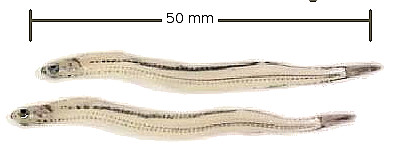 New Zealand Whitebait are small fish (about 5 centimetres long) that swim upstream from the sea each spring. They have a delicate flavour and sell for a high price. People usually eat them in fritters.
New Zealand Whitebait are small fish (about 5 centimetres long) that swim upstream from the sea each spring. They have a delicate flavour and sell for a high price. People usually eat them in fritters.
Whitebait the name is given to five native species of fish (species are called galaxiidsis): īnanga (Galaxias maculatus), kōaro (Galaxias brevipinnis), and three types of kōkopu (Galaxias fasciatus, Galaxias argenteus). They are called whitebait in their juvenile stage when they change from larvae into young fish. They swim upriver to lakes and streams, where they live as adults.
Īnanga are the most common species, and have a one-year life cycle.
Adult fish spawn (lay and fertilise eggs) in autumn, among plants at the edge of estuaries. When a high tide (known as a spring tide) reaches the eggs, larvae hatch out. The outgoing tide carries them out to sea for the winter. In the springtime, they swim back to estuaries, and upstream to fresh water. By autumn, the adult fish are ready to swim downriver to spawn. After that, they die. Little is known about how the other species spawn.
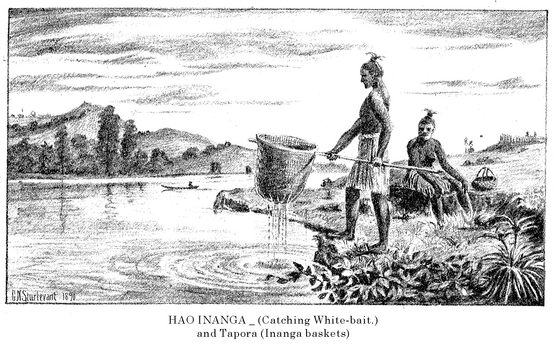 Whitebait can be caught from many New Zealand rivers, but especially in South Westland. Because they swim against the river’s current, they stay near the edge, where the current is weaker.
Whitebait can be caught from many New Zealand rivers, but especially in South Westland. Because they swim against the river’s current, they stay near the edge, where the current is weaker.
Māori caught whitebait in woven flax nets. After drying them in the sun or over a fire, they steamed them in baskets, in an earth oven. In the past Māori also caught adult īnanga in autumn as the fish made their way downstream to spawn in estuaries. One method involved cutting a channel through a bar of gravel in a stream bed. A woven flax trap known as a kaka was placed in the channel. It had an open upstream end and a closed downstream end. Water could flow through, but the tight weave would catch the fish as they swam downstream.
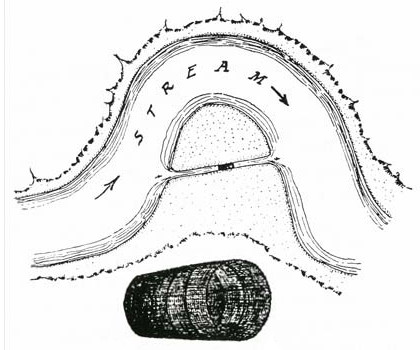
 on the Kaituna River in the Bay of Plenty.jpg)
Europeans introduced the use of cotton mesh nets. Before there were refrigerators, the whitebait was canned.
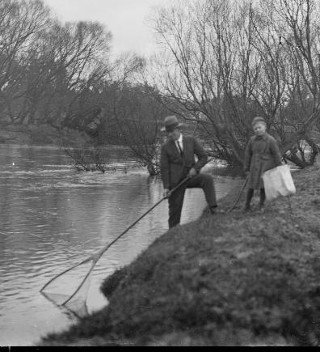
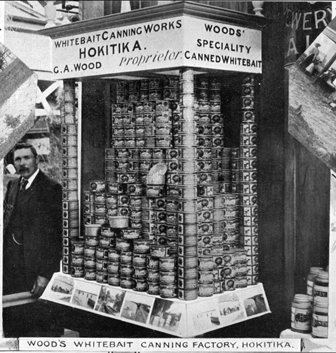
Now days each spring, whitebaiters sit on river banks, hoping to catch the fish in fine mesh nets. These are hand held, or staked into the river bed. They also use screens in the water to guide the fish into the nets.
People once caught huge numbers of whitebait. Sometimes they would feed them to their hens, or use them as manure. But many estuaries where whitebait hatched have now been destroyed, and river water is more polluted. It is much harder to get a good catch, and there are rules to protect fish numbers
People once caught huge numbers of whitebait. Sometimes they would feed them to their hens, or use them as manure. But many estuaries where whitebait hatched have now been destroyed, and river water is more polluted. It is much harder to get a good catch, and there are rules to protect fish numbers